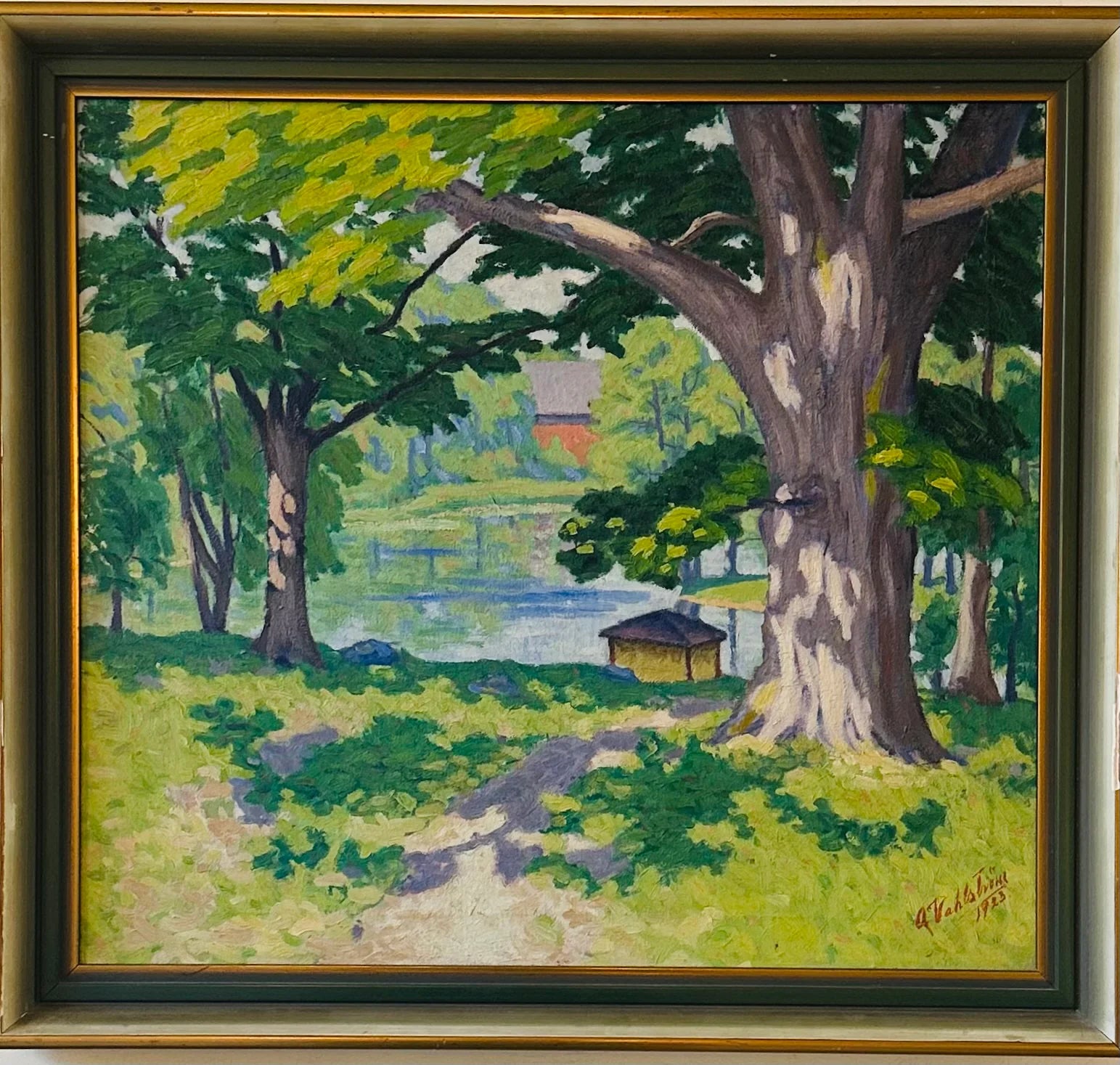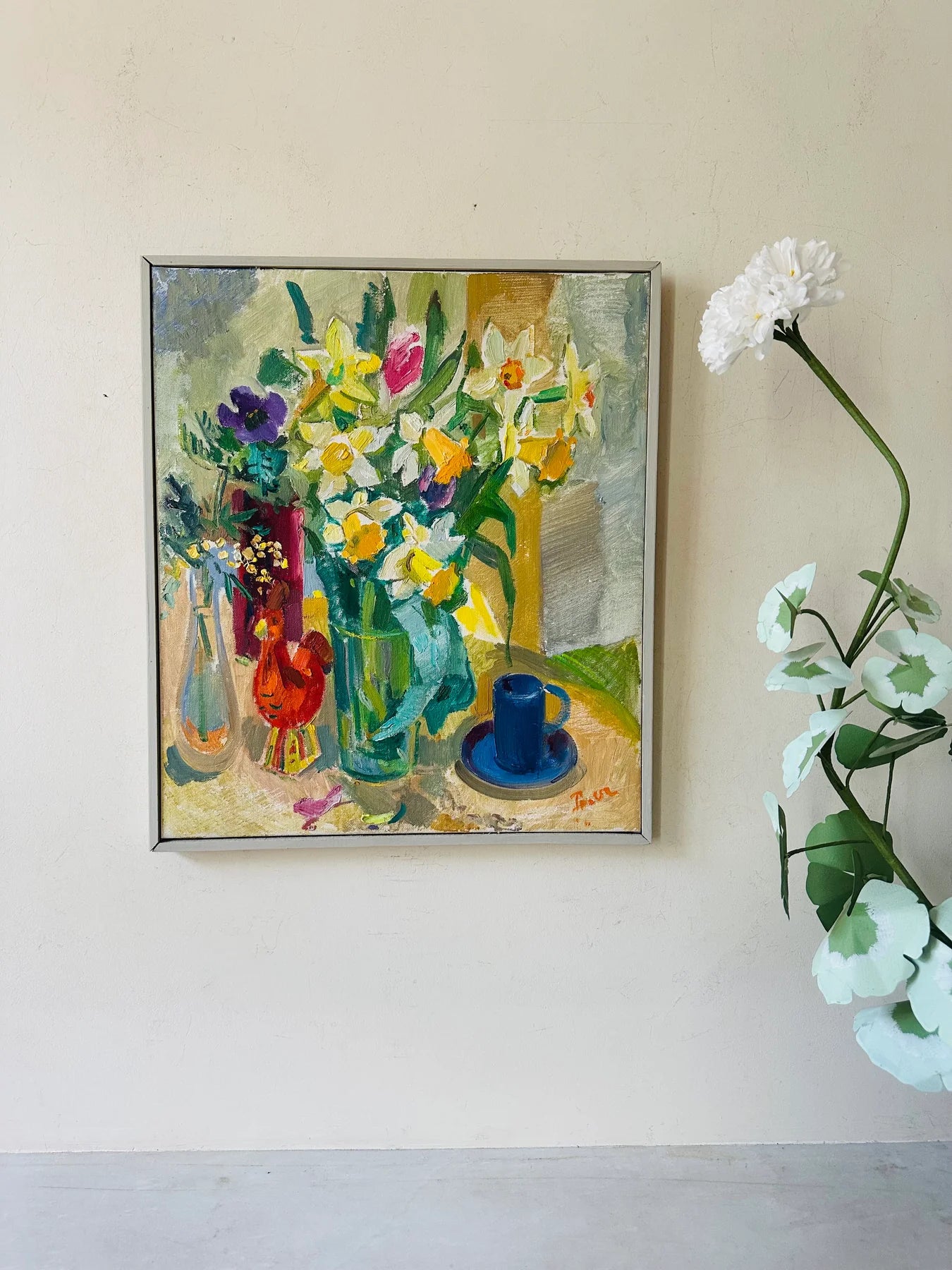How to Clean a Vintage Painting
So you've just bought a vintage, secondhand painting, and you want to return it to its former glory. Or, you enjoy the rustic nature and history of buying preowned decorative art, but you want to give it a bit of a tidy up. Here is a simple guide to cleaning a vintage artwork without damaging it, without any use of harsh chemicals which could harm the piece. Always get an expert's opinion if you are not sure.
'Pears and Glass ' by Eric Cederberg, 20th century, oil on canvas, available at Collins & Green Art
1. Place the Painting in Good Lighting on a Flat Surface
This may seem rather obvious, but it is essential to place the painting where you can see it properly to give it an effective clean. This will reveal where the painting needs the most attention, and also helps you see where you have already cleaned during the process. Also, making sure you have placed the painting on a flat surface prevents any unexpected movement of the canvas in the frame.
Pussy Willow and Tulip, Gerhard Wilborg 1897-1982, dated '43, oil on canvas, available at Collins and Green Art
Before you make any attempt to clean the painting, take a good look at it! Check to see if it is an oil or acrylic painting, as this can affect the cleaning process. Look for any tears on the canvas, and if you find any consider approaching a professional as you don't want to damage the painting any further. Also think about the frame; perhaps it needs to be changed or maybe simply needs cleaning. This can dramatically affect how the painting looks. Also, consider how old the paintings is; older oil paintings do naturally fade due to the breakdown of the pigments over time, which for fine art, rather than decorative pieces, needs a restoration rather than a simple clean.
'Sunflower Bunch' by G. H. Carlsson, gouache on paper, under glass, available at Collins & Green Art
2. Start cleaning
Firstly give your picture a gentle dust with a soft cloth, preferably microfibre to carefully pick up any dust. Then, again, very gently and tentatively, clean the painting with a solution of olive oil soap using a small and very soft paintbrush. Start in one corner and clean only a very small area. Do not rub or apply any pressure as this will damage the painting. Finish with plain water to make sure you don't leave any soap residue on the canvas.
There are specialised oil painting cleaning solutions which are available in good art shops such as @greenandstone. If you are using a special oil painting solution, this will have been formulated for a more thorough clean. These cleansers have to be left to settle for a couple of minutes to penetrate the dirt on the painting's surface and then wiped off .
Do not use anything alcohol based on your paintings as this will remove the paint, and do not be tempted to use any 'quick hacks' such as baby oil as this can leave a sticky, unappealing residue on the painting.
'Tiny Mediterranean Trees' dated 1960, oil on board in vintage French carved wood frame, available at Collins & Green Art
'South of France' by Gertrud Wräcke Lindqvist, oil on canvas, available at Collins & Green Art
'Geraniums' by Adeline Hugonnard (1906-1987), oil on board, available at Collins & Green Art
Once you have completed a small corner area leave it to dry. Look at the area you have cleaned and see what a difference it makes. Sometimes it won't make any difference at all so don't be disappointed. When you can see the areas you have cleaned, and those you haven't cleaned, you can admire the difference! Good lighting is essential, as you don't want to keep going over the same section and thus damage the painting. Carry on with the rest of the painting following this process.
'Green Landscape' by Per Falke (1924-1982), oil on canvas, available at Collins & Green Art
Of course, you can choose to clean the frame before the painting itself. Look at what the frame is made of, and use a similar damp microfibre cloth to pick up any dust on the frame. Sometimes a cotton bud is useful to clean the dust off the twists and turns of decorative picture frames. The frame should really compliment and showcase your painting, so don't neglect it!
'Guitarist' by Sven Linder, (1919-2007), oil on canvas, available at Collins & Green Art
It is important to look after your paintings, whether to keep the integrity of the paintings intact for generations to come or for the artworks to look good as decoration in your home. Always remember to consult an expert if you are unsure how to care for your painting.
I hope this article has been helpful and do have a browse at the vintage paintings available here at Collins & Green.
By Eloise Saggers, Collins & Green Art
This is only a guide to what we do at Collins and Green; we cannot take any responsibility if this goes wrong for you! I hate having to add this sort of disclaimer but I am told I must!










